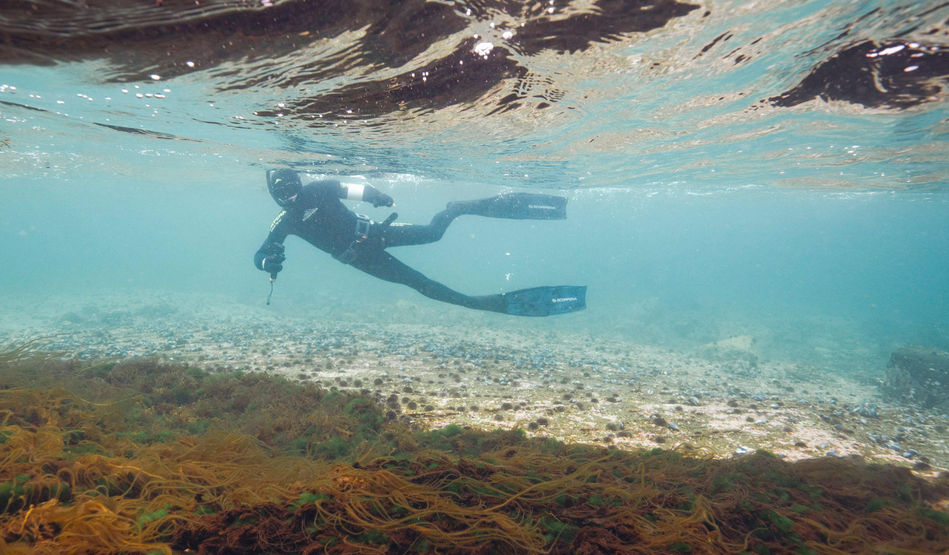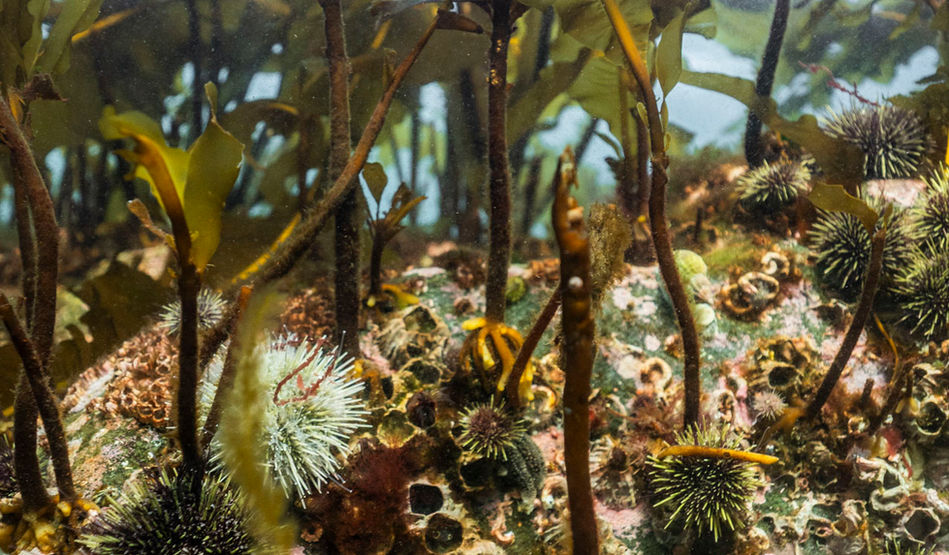
What you'll do:
Contribute from land with citizen science, or in the sea to lower the sea urchin density and document changes in marine life. Wrap up the day with some well-earned waffles!
When:
All year round.
Where:
Three sites: Sørsjetéen and Telegrafbukta (Tromsø), and Øksfjord, Finnmark.
What the project is about:
Did you know that Norway may have lost up to 90% of its kelp forests? the modernization of fishing methods and fleets in the 1970s led to intense pressure on coastal fish stocks, disrupting this delicate balance. With their natural predators depleted, sea urchin populations have exploded. These spiny creatures have grazed relentlessly on seaweed, stripping away the once-lush forests and leaving behind vast underwater wastelands, the so-called “urchin barrens.” THE HIDDEN DESERT Because this destruction happens beneath the waves, it goes unnoticed. But imagine if 90% of Norway’s land forests had vanished in just two generations. Wouldn't that spark outrage? That’s where we come in! Our mission is to restore kelp forests. And you can be part of it! WHY KELP FORESTS MATTER Kelp forests: - Capture carbon, fighting climate change - Consume nitrogen that ends up in the sea - Produce vast amounts of oxygen - Reduce ocean acidification - Protect coastlines from storms - Provide nurseries for fish & marine life. If this is not convincing enough, kelp forests provide formidable ecosystem services, which scientists have evaluated to be 500 billion US$ per year. Simply put, we need these forests back, now! THE MISUNDERSTOOD SEA URCHIN Sea urchins often get blamed for the disappearance of kelp forests, but the real story is more complex. The green sea urchin (Strongylocentrotus droebachiensis) is a native species and plays a crucial role in a balanced marine ecosystem, when predator populations are healthy and diverse. The problem isn’t the urchins themselves, but rather the disruptions that have allowed their numbers to explode. Overfishing has removed key predators like cod and wolf fish, leaving sea urchins to multiply unchecked and overgraze kelp forests. Instead of viewing urchins as the enemy, we should be asking a bigger question: Why are their populations so high in the first place? Local restoration efforts, like removing excess urchins, can help bring kelp forests back. But for long-term solutions, authorities need to address the root causes of ecosystem imbalance—restoring predator populations and improving marine management. HOW YOU CAN HELP The TROMSØ KELPERS are a growing group of volunteers—snorkelers, scuba divers, and citizen scientists—who are taking action. In Sørsjetéen, a 200-meter-long jetty in Tromsø city center, these volunteers removed thousands of urchins since October 2023. On the first restoration site, the barren landscape has turned into a thriving kelp forest teeming with fish, lumpfish, nudibranchs, and colorful anemones. The second site is in Telegrafbukta. With guidance from marine biologists at the Arctic Museum of Norway, we will continue restoring Tromsø’s underwater forests. The third site is in Øksfjord in Finnmark. JOIN THE ADVENTURE Snorkelers & divers: Remove sea urchins and watch life return! Citizen scientists: Help monitor and document the changes. Land volunteers: Support logistics, safety, and… eat waffles when we're done! Anyone who can snorkel in a 7mm wetsuit can become a Kelper. Check out our next event, sign up, and be part of the story!
Short film by Ismaele Tortella and Roel Melman
Short film by Sigurd Vaagland
Short film by Antoine Tribotté
Join these events

Our partners
Rissa citizen science runs all the community outreach projects, kelp restoration and citizen science in Tromsø as part of Ocean Green, led by Ava Ocean, and in close collaboration with NIBIO.


Our other partners in Ocean Green are NIVA, Akvaplan Niva, Across Nature and Hofseth Biocare.


Marine biologist and associate professor at the Arctic Museum of Norway Andreas Altenburger is a key research partner for the site in Telegrafbukta. He is supervising the scientific methods we use to measure the impact of restoration efforts in Telegrafbukta and especially the changes in seaweed community and biomass, and in marine invertebrates.






























